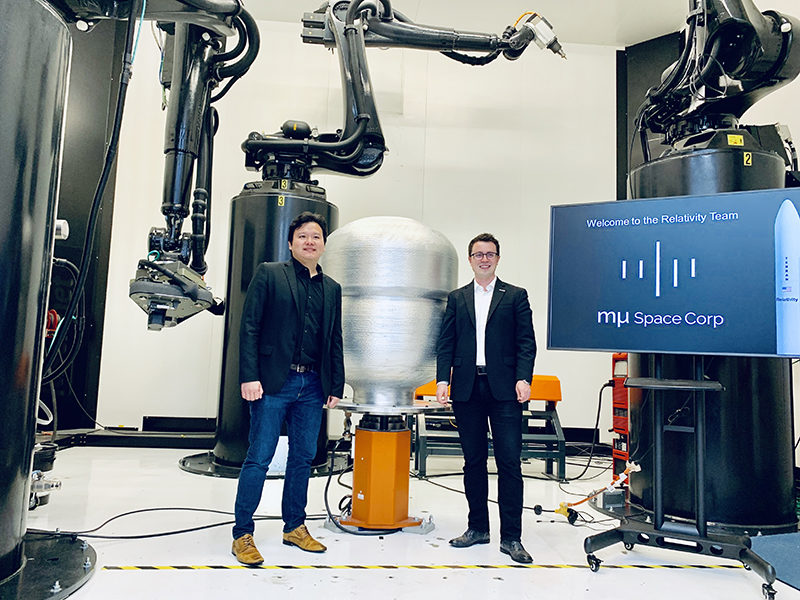Latest News

Mu Space CEO and Founder James Yenbamroong and Relativity Space CEO and Founder Tim Ellis stand in front of Relativity’s Stargate, the world’s largest metal 3D printer. Photo: Business Wire
Relativity, partnered with mu Space, a Thai satellite and space technology company, to launch a satellite to Low-Earth Orbit (LEO) on Relativity’s Terran 1 rocket, the world’s first 3D printed rocket. Relativity’s 3D printing technology platform together with Terran 1’s flexible architecture aims to provide mu Space a faster and more reliable launch at a lower total mission cost.
Relativity is developing the first a aerospace platform to integrate Machine Learning (ML), software, and robotics with metal 3D printing technology to build and launch rockets in a shorter amount of time. The company expects to build its Terran 1 rocket from raw material to launch-ready in less than 60 days. Additionally, mu Space is developing both LEO and Geosynchronous Earth Orbit (GEO) satellite and space technologies to help accelerate the adoption of Internet of Things (IoT) devices in smart cities, and encourage new space investments in the Asia-Pacific region. Mu Space’s LEO satellite will be a primary, dedicated payload on Relativity’s Terran 1 rocket, launching in 2022.
“Mu Space is accelerating space technology development in Asia, and we consider the moon as the next explorable body in space beyond Earth,” said James Yenbamroong, CEO and founder of mu Space. “Relativity has the vision, team, and technology to deliver exceptional advantages in launching mu Space’s payloads, and supporting our goal of creating an interplanetary society in the future.”
Get the latest Via Satellite news!
Subscribe Now